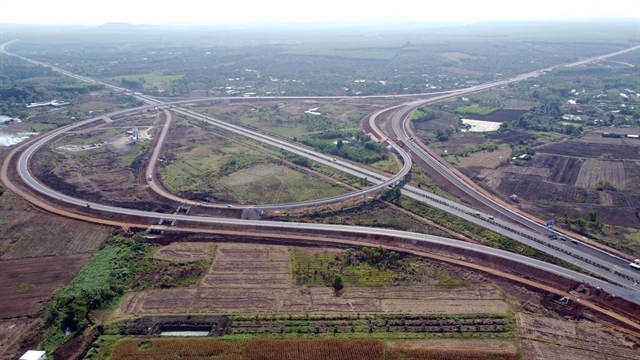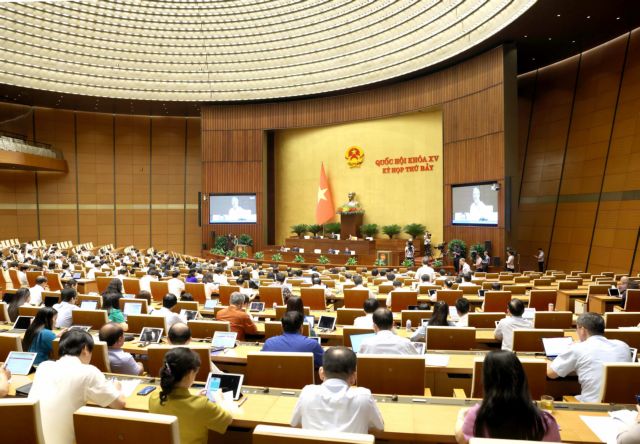 Society
Society

 |
| The National Assembly convening on Thursday morning. — VNA/VNS Photo Phương Hoa |
HÀ NỘI — The National Assembly on Thursday continued a discussion on the Capital Law, stressing the need for a long-term vision for developing the capital city and the nation.
NA deputy Trần Văn Tiến from Vĩnh Phúc Province agreed with the draft content on planning and the goals and trajectories for Hà Nội’s development, but added that an implementation report on Hà Nội’s master plan by 2030 should be included for better planning.
He added that changes to the capital city’s master plan must align with the draft Law on Urban and Rural Planning, which is currently open for comments from the NA, to avoid multiple adjustments in the future.
Sharing the same concerns as Tiến, Thái Bình Province’s deputy Nguyễn Văn Thân said that the report should clarify achievements since 2011 to create a feasible long-term vision in planning.
As for the concept of a ‘city within the capital’, Thân suggested that this should be a ‘capital within the city’, meaning inner districts will comprise the Hà Nội 'capital', while the remaining area would be ‘Hà Nội city’.
This allows for the state and 63 cities and provinces to focus resources on the capital as a socio-political centre, rather than a socio-economic one, he said.
Deputy Hoàng Văn Cường from Hà Nội said that the capital city plan must include all the factors necessary for development, as it represents the development of the entire country.
He stressed that there are several areas of concern in executing this plan, the first being traffic congestion – one of the most critical current bottlenecks for Hà Nội.
A major focus for infrastructure investment should be the 14 urban railway routes that are expected to form a transport network allowing Hà Nội citizens to travel to any location within the city, replacing personal vehicles and addressing pollution problems.
Cường said: “When the urban metro network is developed with a connection to the outer areas, the economic activities that are currently concentrated in the inner city will automatically spread to new urban zones.”
In particular, this network will also connect Hà Nội to the provinces of Bắc Ninh, Vĩnh Phúc, Hưng Yên and Hà Nam, turning these localities into satellite cities for development, he added.
The second area of concern is to invest in a wastewater collection system separate from the water system for rainfall and construction, in addition to local and central wastewater treatment areas.
This is to ensure that discharged water from the city is clean, reducing pollution, said Cường.
In order to execute this vision, it is necessary to have a mechanism that supports people living in the Old Quarter to renovate without the need for relocation.
“With this support, people themselves will turn this area into a space for commerce and services.
“Their property is still theirs, they can run a business or allow others to invest and renovate their locations into accommodations or food establishments.
“In this way, we can develop a ‘night-time economy’ area for Hà Nội, not only around Hoàn Kiếm Lake like we’re seeing right now, but also the entire Old Quarter or the West Lake area,” said Hà Nội’s NA deputy. — VNS




